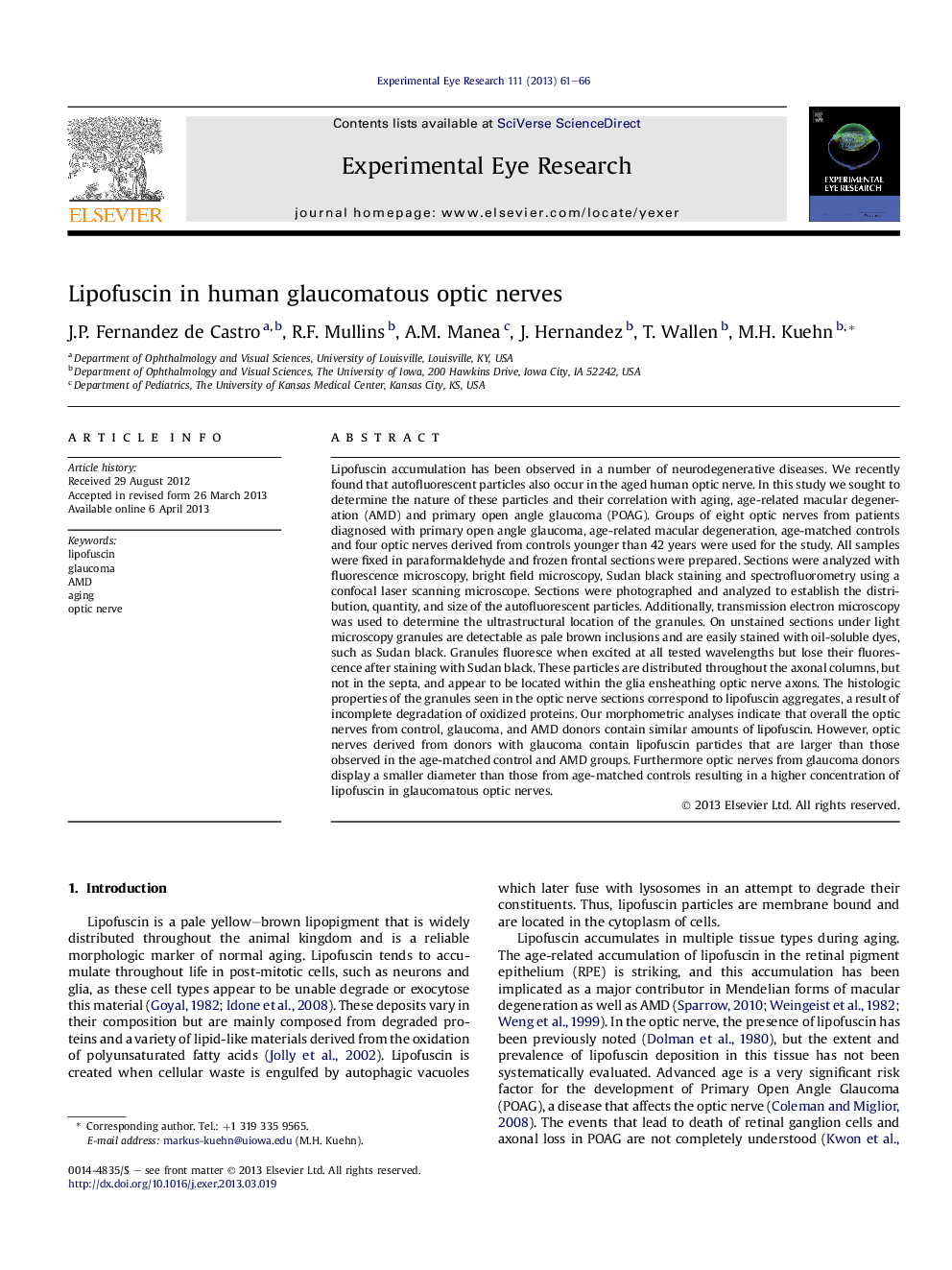| Article ID | Journal | Published Year | Pages | File Type |
|---|---|---|---|---|
| 6197297 | Experimental Eye Research | 2013 | 6 Pages |
â¢We examine the distribution of lipofuscin in the human optic nerve in healthy eye donors as well as those with PAOG and AMD.â¢Lipofuscin formation is common in aged optic nerves.â¢Lipofuscin deposition occurs within the fascicles of the optic nerve.â¢Lipofuscin particles are larger and more densely spaced in optic nerves derived from eye donors with a history of glaucoma.
Lipofuscin accumulation has been observed in a number of neurodegenerative diseases. We recently found that autofluorescent particles also occur in the aged human optic nerve. In this study we sought to determine the nature of these particles and their correlation with aging, age-related macular degeneration (AMD) and primary open angle glaucoma (POAG). Groups of eight optic nerves from patients diagnosed with primary open angle glaucoma, age-related macular degeneration, age-matched controls and four optic nerves derived from controls younger than 42 years were used for the study. All samples were fixed in paraformaldehyde and frozen frontal sections were prepared. Sections were analyzed with fluorescence microscopy, bright field microscopy, Sudan black staining and spectrofluorometry using a confocal laser scanning microscope. Sections were photographed and analyzed to establish the distribution, quantity, and size of the autofluorescent particles. Additionally, transmission electron microscopy was used to determine the ultrastructural location of the granules. On unstained sections under light microscopy granules are detectable as pale brown inclusions and are easily stained with oil-soluble dyes, such as Sudan black. Granules fluoresce when excited at all tested wavelengths but lose their fluorescence after staining with Sudan black. These particles are distributed throughout the axonal columns, but not in the septa, and appear to be located within the glia ensheathing optic nerve axons. The histologic properties of the granules seen in the optic nerve sections correspond to lipofuscin aggregates, a result of incomplete degradation of oxidized proteins. Our morphometric analyses indicate that overall the optic nerves from control, glaucoma, and AMD donors contain similar amounts of lipofuscin. However, optic nerves derived from donors with glaucoma contain lipofuscin particles that are larger than those observed in the age-matched control and AMD groups. Furthermore optic nerves from glaucoma donors display a smaller diameter than those from age-matched controls resulting in a higher concentration of lipofuscin in glaucomatous optic nerves.
